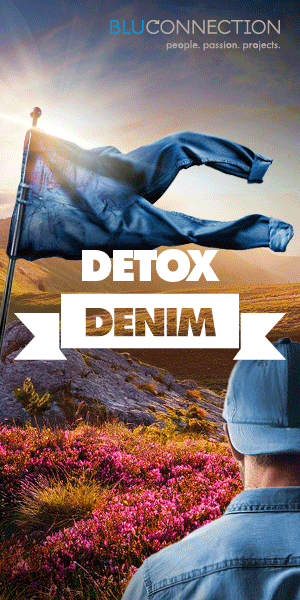Hiro Yoshikawa: A new twist on Japanese denim

Ikeme Eshemokhai in conversation with Hiro Yoshikawa, founder of Washi Jeans. Mr Yoshikawa understands the value of craftsmanship, hard work and patience: his new jeans collection, created using traditional Japanese washi paper, has been 21 years in the making
Can you tell us about yourself and your background.
I am from an 18th generation traditional Japanese brewing family, our sake is called Taiko Sake. Because I am the second son, my brother had the main responsibility of taking care of the sake brewery. I, on the other hand, had the opportunity to leave home after I finished university to travel around the world and discover what I liked. I found denim and now my passion and my life is all about denim. I am also helping my family to sell sake outside of Japan now.What was your first denim memory? And how did that make you pursue a career in the denim industry?
When I started working in the fashion industry 31 years ago I had zero knowledge about denim and washes. I produced a totally wrong colour when I took care of a Japanese brand’s production. The client had requested a dark colour but I washed it into a lighter colour. They were very unhappy and wanted me to take full responsibility for the production. However, a few weeks later, this same client called me and said they were so happy to have sold out of all the jeans. They said the colour I had made was not in the market yet and people loved it. That saved my life. It was my first and biggest “fail” and from then on I started taking denim very seriously. I put my whole energy into only denim items and focused on working in denim.
The washi paper process is very unusual for jeans. Can you tell us what the material brings to the jeans, and why you chose it?
In my 200 year-old family history we have used lots of Japanese washi paper, for example, for account books, Shoji paper walls and Kakejiku (Japanese hanging scrolls). Japanese washi paper has also been used in the making of sake labels since 1672. I was luckily surrounded by washi paper since the day I was born. I decided to produce jeans using this washi Japanese paper in 2000 due to its unique characteristics.
Washi is born from a natural material; it has special characteristics such as being anti-bacterial, having shape memory, temperature control and UV protection, as well as being quick drying.
Have you encountered any challenges?
The creation of washi fabric has been particularly difficult. Since 2000 I have been trying to develop and perfect washi paper. Paper needs to be turned into yarn. It took me around seven years to develop the paper into paper thread. This paper yarn is called Washi No.6 Paper and is made in Okayama, Japan. After I achieved making the yarn, I needed to make the fabric. But I only liked selvedge. It took another three years to produce selvedge washi paper fabric. My brand Washi launched in 2012. I have been adjusting the fabric for another eight years and now it is finally time to officially launch the new collection in June 2021. Overall, it took 21 years of preparation.
What inspires your creative process?
Everyday life. My experiences. Very often I get inspired when I am dreaming or when I am taking a shower. Sometimes, creating alone is difficult, so sometimes I like to collaborate with other people or brands to exchange and brainstorm new ideas.
Talking about creative collaborations, who would you love to work with?
I would love to collaborate with brands who are environmentally friendly and saving the earth.
What has been the most memorable experience in your career?
Besides my Washi story, I have been producing jeans for many major jeans brands for the past 31 years. Overall, all of it has been a very valuable experience, allowing me to study from the fabric to the final product, as well as some of the sales side. Without those experiences, I don’t think I would have the career I have today. I fully appreciate all the brands that gave me the chance to experience working on their denim production and design. It’s a collective experience in my past that created my today.
How have your experiences shaped the way you work?
I spent a lot of time inside the sake brewery when I was small, and witnessed the workers working so hard from morning until midnight. Sake-making requires lots of skill and is almost the same as taking care of a newborn baby as you have to watch sake for almost 24 hours a day, non-stop. The sake in my family brewery is all hand-made and not using any modern machines for the past 17 generations until now. There were over 10,000 sake breweries in Japan 50 years ago but now there are less than 3,000. My family business is one of the 3,000.
From this valuable experience, my mindset has never depended on new technology and new machinery. I understood that the denim world changes quickly and is dominated by modern technology. However, if you look back, sake and denim history are very similar.
The best sake or jeans are always made by hand. There is human heart inside these products. In Japan, we had many nice jean factories 50 years ago. However, only a few are left now. If we don’t protect this industry, this environment will disappear soon.
Washi will always protect and try to save the industry. Washi will be 100% made in Japan and we will protect the people in the denim industry.
What would you tell young people about the denim industry?
Denim is not an item to wear once and then throw away. It is very special: the rope dyed indigo, weaving on vintage weaving machines, sewing on a Union Special [sewing machine]. A wash can comprise of over 20 different processes by hand, there are also amazing metal trims. Jeans have history, and craftsmen have created very nice vintage denim in the last century.
Once you have found your own pair of jeans that you love, these jeans will be for life and will become part of your skin. However, young people rarely take the time to understand old vintage jeans nowadays. Therefore, by setting up my small brand Washi, and through the experience in Washi House (our creative house), I want young people to be able to see, feel and experience the value of vintage jeans and the history of denim. And they also have the chance to see the progress of new ideas I am working on.
What are your plans for the brand?
We will launch a new jean fit called Hishi, using a new paper material, Washi No.6 Paper, in June 2021. The new collection is called ‘Life on Earth’. We renewed the concept and are using our own washi paper for the whole collection. After the launch, we will explain and share the experience of real Japanese paper jeans with everyone. We have two lines, one is Shizen (meaning nature), and another one is Rikisaku (meaning craftmanship), which are made to order.
Washi is an environmentally friendly brand. All the trimmings, such as pocketing, labelling, etc, are made in organic cotton. We also worked hard on the technological development of indigo rope-dyed cotton warp yarn in the fabric.
We use eco-dyeing, it’s an environmentally friendly dyeing system. Normal indigo dyeing uses a large amount of hot water and a cleaning agent in the pre-treatment and post-treatment processes. The eco-dyeing system reduces the environmental burden by reducing these. The selvedge fabric weft uses Washi No.6 Paper, the warp uses Eco Cotton.
How do you relax?
I work Monday to Sunday, from 9am to midnight. I will drink my family sake, Taiko Sake, to have a little break when I am tired.
Photo: Washi Jeans/Ikeme Eshemokhai













